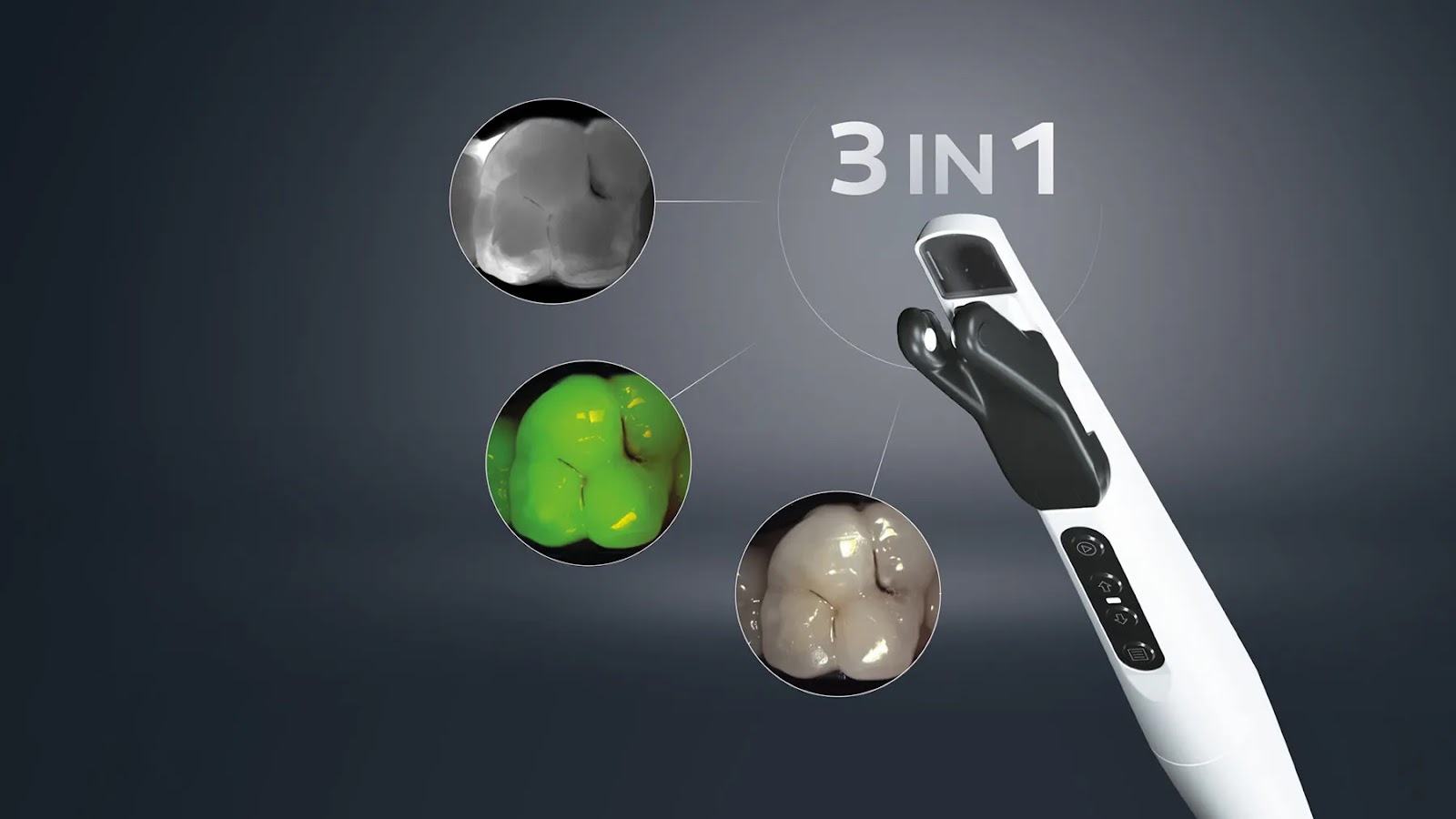For the last 4 months or so I've been working with the new Kavo DIANGOcam Vision Full HD clinically. One of the great things about my role at DPR is being able to get my hands on and test new products that have real potential for the profession. I love that part of my job and one of the reasons is when I come across things like this device.
I actually have quite a backstory with this device. Around 2001 I was approached by a company called EOS (Electro-optical Sciences) to work with a device they had developed called DIFOTI (Digital Imaging Fiber-Optic TransIllumination). It was a device that allowed for transillumination of teeth paired with an intraoral camera that allowed the user to capture images of the tooth while being penetrated from the buccal and lingual surfaces with bright white light. While it worked well and was clinically accurate, the company couldn't gain sales traction.
Eventually the company had no choice but to shut down. However, they sold the technology and patents to... Kavo.
Kavo took the device and performed a complete redesign. One of the biggest changes the company made was to replace the bright white visible transillumination with NIR (Near InfraRed). That change provided better transillumination without the resultant 'light pollution' from the visible light.
That is the system that now powers the DIGNOcam Vision.
In my time using the device I've been very impressed with it. The unit is well designed, well balanced, and sleek. It pairs 3 functions into one easy to use handpiece. Those three functions are:
- HD intraoral camera
- Transillumination (using the previously mentioned NIR)
- Fluorescence caries detection
- The HD camera provides truly remarkable images. Simply laying the camera over a tooth provides crisp clear intraoral images. The camera also also has an incredible autofocus feature that keeps those images crisp no matter the distance. The autofocus also allows for extraoral shots as well. The camera can be held up outside the mouth and the autofocus (in less than one second) will adjust. That allows the user to take full face images without distortion or fisheye. No more taking these images with a standalone camera. Whether a smile, full face, or lateral image is needed, those patient views can be taken quickly and easily.
- The transillumination uses the NIR to illuminate an individual tooth from buccal and lingual to easily identify caries, cracks, and failing restorations. This function allows the user to clearly see interproximal areas of caries even before they appear on bitewing radiographs. It's also a great way to monitor areas, especially if a doctor is using remineralization therapy. Those areas can be easily evaluated at any appointment without the need for x-rays.
- The fluorescence function allows the user to pinpoint areas of breakdown at their very earliest stages. For conservative approaches, whether remineralization or minimally invasive efforts, this device can be a tremendous aid.






No comments:
Post a Comment